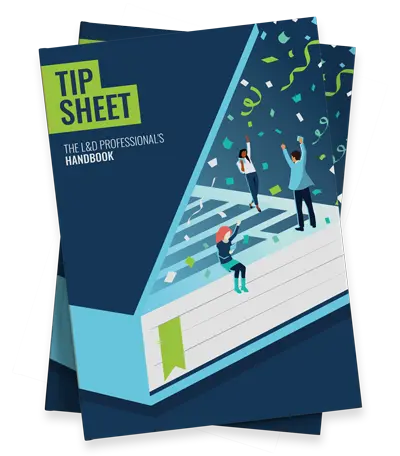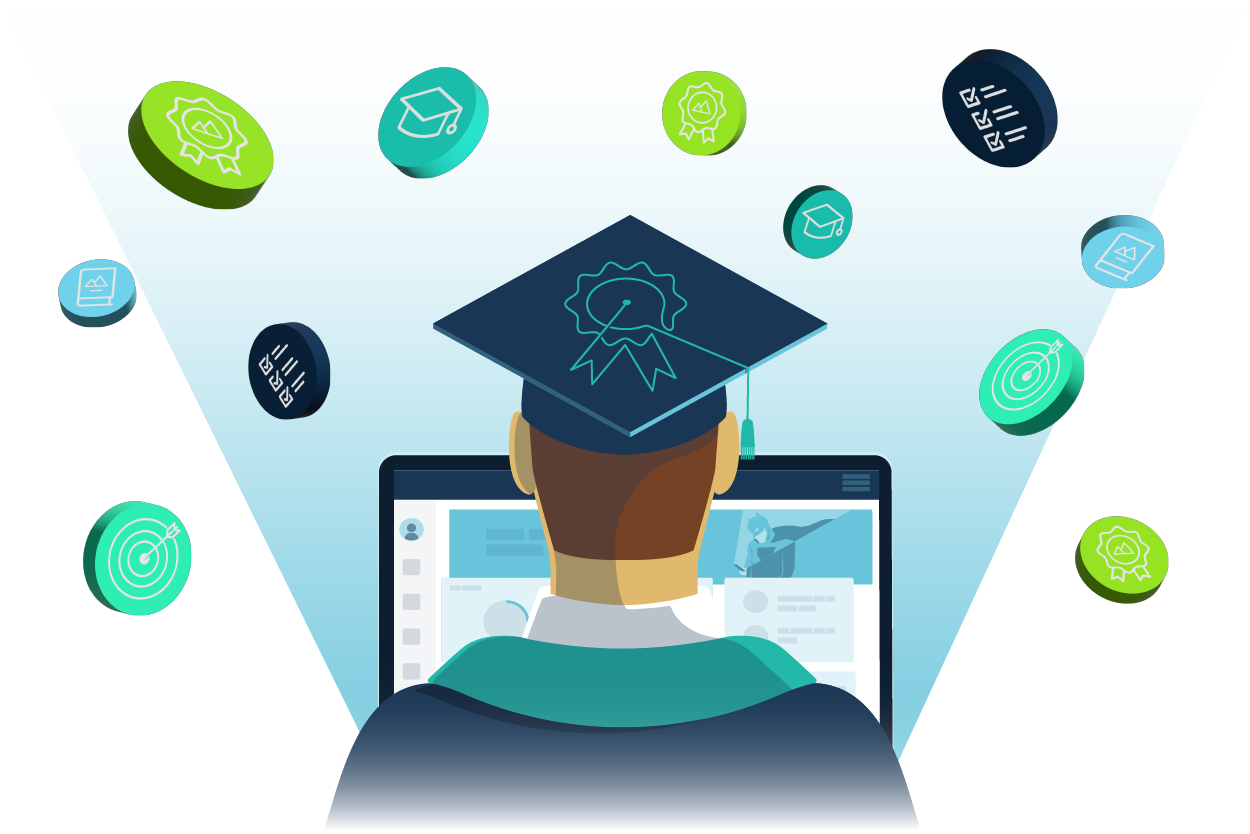
Effective L&D programmes aren’t powered by wishful thinking. They’re data-driven. At every stage in the journey, we need to continuously measure progress and check that we’re closing knowledge and skill gaps. Learner assessments are our most powerful tool for achieving this.
As educator Rajen Jani reminds us, ‘Assessment precedes improvement.’ They’re the ideal vehicle for checking understanding, evaluating progress and delivering feedback. This means they play a pivotal role in driving positive learning outcomes.
In other words, assessments aren’t just a recipe for stress and bad grades. When delivered properly, they empower and motivate your learners by providing them with a roadmap for growth. However, it’s important to be mindful of the potential for labelling, and ensure assessments are used to guide learning, not limit it.
That’s where we come in. In this article, we’ll delve into the world of learner assessment and equip you with the knowledge and strategies you need to confidently evaluate your learners’ progress. Ready to become an awesome assessor? Let’s get started!
What is an Assessment?
Let’s start with a simple definition. An assessment is the process of gathering information about a person’s knowledge, skills or attitudes. This information is then typically used to make a judgement about their learning or competency.
Assessments come in different shapes and sizes. Some are formal in nature, such as standardised tests. Others can be more informal, like a casual conversation with a manager to check your understanding. Their purpose tends to vary depending on the context:
- Education: In schools, universities and onwards, assessments are used to measure student learning and identify areas where extra support may be required.
- Workplace: In the world of work, assessments are used to evaluate an employee’s knowledge or skills and assess their progress towards organisational goals.
- Healthcare: In the medical profession, assessments are used to diagnose particular conditions and to monitor a patient’s progress.
The Four Types of Assessment
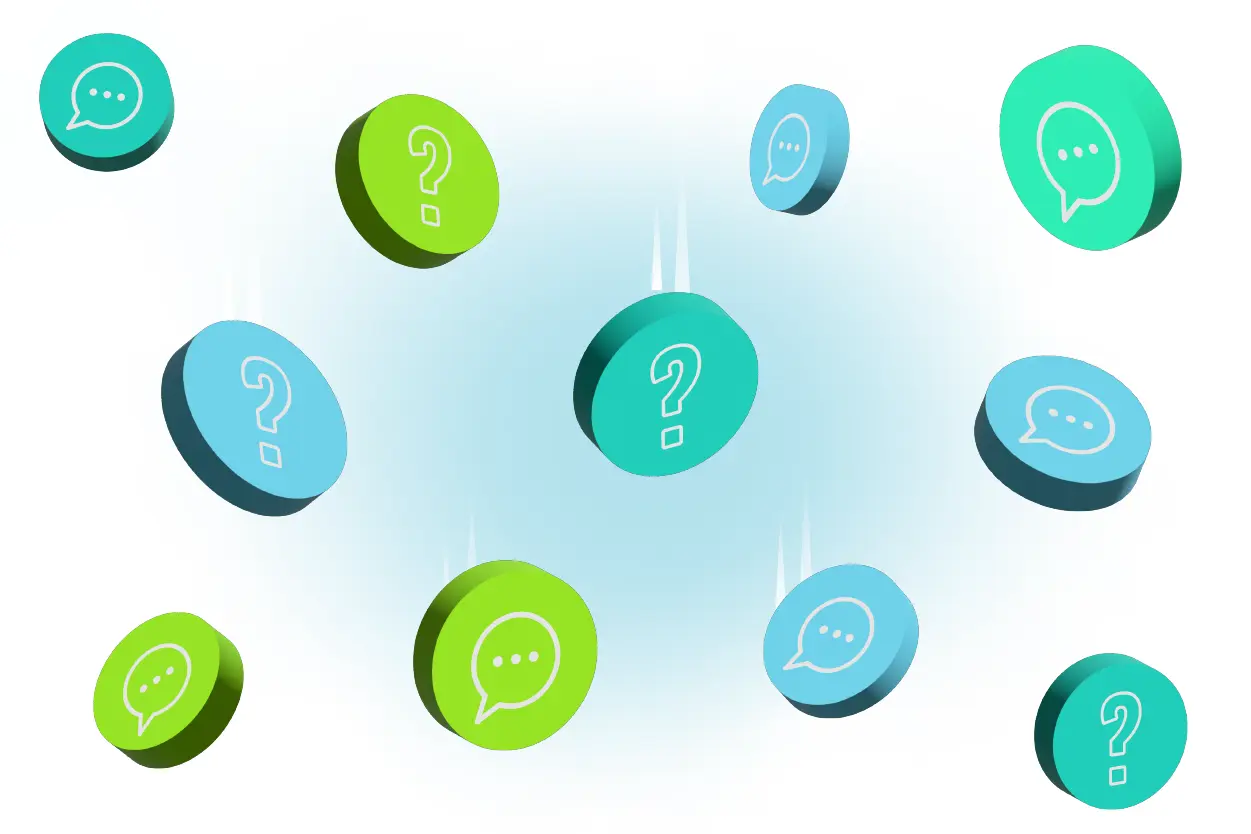
There’s more than one type of assessment to be aware of. Indeed, different types of assessments are used in various contexts to serve specific purposes. For example:
- Formative Assessments: These are assessments for learning. They aim to identify knowledge gaps and inform instructional approaches. Examples include surveys, quizzes, polls, discussions, interviews and observations. As such, a training needs analysis is a formative assessment. The output of these assessments can then be used to refine your learning programmes.
- Summative Assessments: These are assessments of learning. They measure learning outcomes at the end of a programme or learning unit. Examples include exams, projects, presentations or a test that gauges whether a learning objective has been achieved. As such, the quizzes you include at the end of your eLearning units are summative assessments.
- Diagnostic Assessments: This assessment type is used to measure a learner’s existing knowledge and skills before they embark on a new programme or explore a new topic. This helps you to create more targeted learning experiences that cater to individual needs.
- Benchmark Assessments: This assessment type measures a learner’s knowledge or skill set against a specific set of standards or expectations. Think of it as a checkpoint that compares your learner’s current position against a defined benchmark at a particular point in time. For example, our L&D Health Score is a benchmark assessment.
Other Assessment Types
In addition to the four main types of assessments we’ve discussed, we want to highlight two other approaches. Then we will examine the role they play within your learning and development programmes.
- Self-Assessments: These assessments involve learners reflecting on their learning progress, strengths and weaknesses. This introspective approach, often used before and after a learning intervention, allows learners to track their confidence and identify areas of focus.
- Authentic Assessment: This type of assessment measures your learners’ ability to apply their knowledge or skills in real-world contexts. In other words, you’re no longer testing basic understanding, you’re focusing on how your learners solve problems, make decisions and complete tasks.
The Role of Assessments
Imagine climbing a mountain blindfolded. Reaching the summit becomes a near impossible feat if you’re not able to monitor and track your progress. The same is true for your organisational goals.
Training programmes help you to move with purpose towards your objectives. Unfortunately, they rarely come cheap. According to Training Magazine, US organisations spend $101bn on training every year.
At the same time, the CIPD notes that restrictive budgets are one of the top three barriers to supporting organisational and people goals. In other words, you’re being asked to manage big budgets but these budgets aren’t quite big enough.
With this in mind, you don’t want to be flying blind. Learner assessments provide invaluable data that help you to shape and refine every aspect of your training programme. This means you can move beyond assumptions and gain a clear picture of:
- Training Needs: Assessments conducted before your programme reveal your learners’ foundational knowledge and identify specific skill gaps. This ensures your training is tailored to individual needs and propels your learners toward organisational goals.
- Learning Effectiveness: Do your training materials hit the mark? Assessments are the ultimate feedback loop, revealing whether your learners are acquiring the knowledge and skills you need for them to succeed.
- Knowledge Retention: Assessments don’t just measure initial learning. They track what gets lost over time, revealing knowledge gaps that emerge due to the forgetting curve. This empowers you to step in at the right moment, before valuable skills vanish completely.
- Learner Feedback: It’s not just you who benefits from assessment data. Your learners also gain valuable insights into their strengths and weaknesses. As a result, they’ll be ready to seek out further learning opportunities and take ownership of their learning journey.
- Programme ROI: The data generated from your assessments help you to quantify the impact of your training on learner performance and organisational goals. This provides a clearer picture of your programme’s value.
The Research-Backed Benefits of Assessments
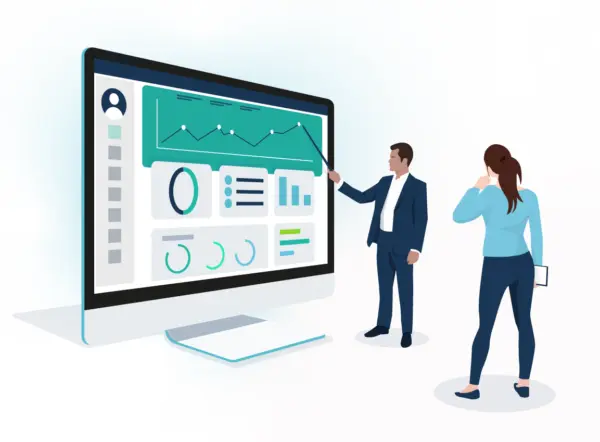
As we’ve seen, assessments are more than a mere box-ticking exercise. Decades of research and application have solidified their position as a cornerstone of effective workplace learning. But don’t take our word for it. Here’s what the research says:
- Better Instruction: Formative assessments are typically used to help you refine your training materials and overall approach. As a result, they help you to improve the quality of your instruction. Indeed, this 2021 study shows that formative assessments can help to increase student satisfaction by 8.6%.
- Enhanced Engagement: Strategically implemented assessments act as mini-milestones, providing learners with a sense of accomplishment and a dopamine boost as they witness their progress. In fact, this seminal 1998 study shows that formative assessments foster agency and help to increase engagement.
- Boosted Confidence: Well-designed assessments that celebrate progress can also increase learner confidence. Indeed, this 2016 study shows that engaging with assessments also improves your self-belief. This positive reinforcement encourages learners to persevere and take on new challenges.
- Improved Outcomes: Assessments don’t just check knowledge. They also improve learning outcomes. Numerous studies, including this OECD review, show a positive correlation between effective assessments and learning impact. This means more focused study, a deeper understanding and better retention of information.
These benefits underscore the invaluable role that assessments play within your learning programmes. Research by John Hattie, a comprehensive analysis of over 800 studies, reinforces this notion. His work reveals that assessments have one of the strongest positive effects on learning outcomes.
How to Deliver an Effective Assessment
Now you’ve seen the power of assessments, it’s time to apply them effectively to your learning programmes. Thankfully, you’ve got a wide array of options to select from. The choice can sometimes feel overwhelming, but fear not! We’re here to help.
Simply follow the practical framework we’ve outlined below, and you’ll unleash the full potential of your learning initiatives in no time.
Step 1: Goal Alignment
As with so many other elements of organisational learning, the foundation of effective assessment lies in clearly defined learning objectives. As such, before selecting your assessment approach, take a step back and ask yourself what you’re trying to achieve.
Specifically, consider what skills and knowledge you’d like to arm your learners with. With these objectives in mind, it will be much easier to select an appropriate assessment. We recommend using Bloom’s Taxonomy to establish the level of mastery you expect.
We’ve included some examples in the table below to get you started.
| Learning Objective | Assessment Type |
| Gauge existing knowledge and skills | A focused assessment administered before instruction. |
| Increase product knowledge | A pre- and post-programme multiple choice quiz. |
| Develop problem-solving skills | A case study requiring analysis and solution development. |
| Enhance communication skills | A presentation on a chosen topic with peer evaluation. |
| Foster creativity and innovation | An open-ended question prompt that encourages creative solutions. |
| Encourage self-reflection | A self-assessment on learning progress, strengths and weaknesses. |
Step 2: Consider Learner Needs
With a variety of relevant assessment options to pick from, now it’s time to think about your learners. At this stage, think about their prior knowledge, learning preferences and comfort levels. Consider how this will impact your assessment approach.
For example, if you have a group of learners less comfortable with written tests, consider incorporating more project-based activities. Remember to focus on the outcome and ensure your chosen assessment aligns well with your learning objective.
Step 3: Select Your Approach
By this stage, you’ve got a good understanding of your goals and learners. As such, it’s time to select the assessment approach that you’re going to use. You’ll also want to keep practicalities in mind, and ensure you’re using your learners’ time wisely.
Here are some popular options for you to consider:
- Multiple-choice questions: These low-friction quizzes are great for measuring factual knowledge and delivering quick comprehension checks.
- Open-ended questions: Challenging your learners to complete a written assignment encourages deeper reflection and critical thinking.
- Performance assessments: Approaches like simulations, projects or presentations are ideal for evaluating practical skills and the application of knowledge.
- Self-assessments: This approach empowers your learners to take ownership of their learning journey by reflecting on their progress.
Remember: There’s no one-size-fits-all solution to assessing your learners. If there was, there’d be no need for this article. In fact, the most effective approach often combines various assessment types to grant you a well-rounded picture of learner progress.
Effective Assessment Practices
Choosing the right approach is just the beginning. To deliver the best results, you’ll need to apply your assessments strategically, monitor their impact and make updates as necessary. Ready to take your assessments to the next level? Here are some key tips:
- Offer Clear Instructions: Provide your learners with clear instructions and expectations for each assessment. Answer the WIIFM (‘what’s in it for me?’) question to ensure your learners are motivated to perform at their best.
- Minimise Test Anxiety: High-levels of anxiety have been shown to have a negative impact on cognitive performance. To counter this, create a calm and supportive testing environment. Focus on progress rather than success.
- Promote Fairness: Establish and use clear evaluation criteria to ensure consistent and fair assessment. If you’re using a grading system, ensure it’s transparent and that you remain unbiased throughout the process.
- Provide Useful Feedback: Don’t let assessments be a dead end. Offer timely and actionable feedback that guides learners on next steps. Where possible, point your learners towards resources that help to fill any identified knowledge gaps.
- Gather Useful Feedback: Don’t just assess learners, assess your assessments too! This is a vital part of the learning process, so you can’t afford to get it wrong. Seek feedback from learners on the clarity, fairness and effectiveness of your approach.
Using Technology to Deliver Assessments
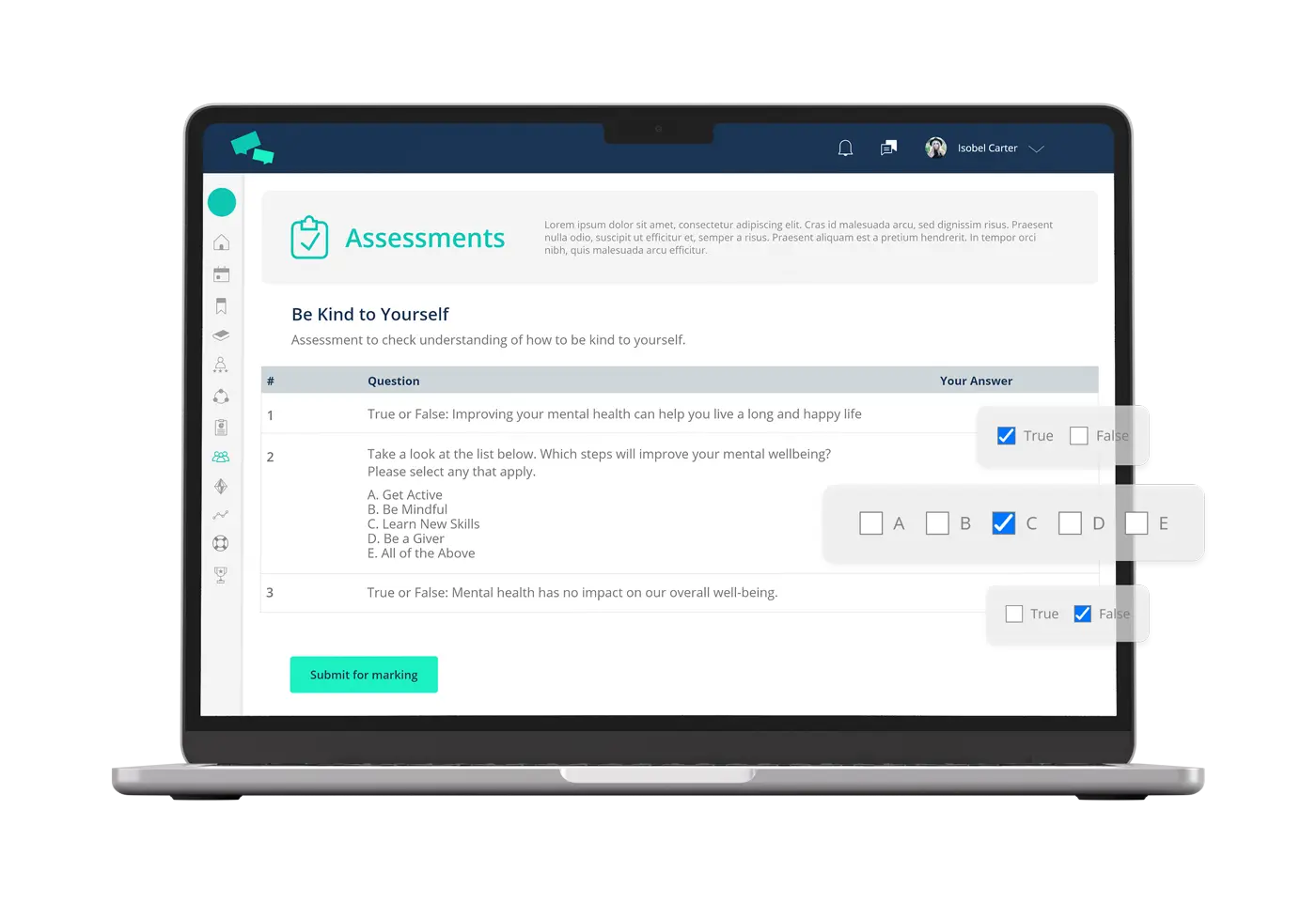
Technology can be a valuable asset in your assessment toolbox. In fact, by embracing digital assessment solutions, you’ll improve the experience for your learners whilst simultaneously reducing your administrative burden.
After all, you’ll benefit from automated scoring, reducing manual grading workload. As a result, you’ll be able to offer faster feedback to your learners. We also recommend using adaptive assessment platforms that adjust the difficulty level of questions based on a learner’s performance.
Thankfully, there are a variety of online assessment and quizzing tools available to you. Here are a few of our favourites. Digital learning tools like learning management systems and learning apps also often come loaded with their own assessment functionality.
For instance, Growth Engineering LMS provides a suite of assessment tools that cater to diverse learning and development needs. You can even set-up automated feedback and push training assets to learners based on their responses.
We’ve also created Knowledge Contests, learner-vs-learner or team-vs-team quiz battles. They pit your audience against each other in a ‘best of five’ format. All you need to do is set up a question pool for your learners to select from.
Knowledge Contests work because they’re both an assessment and a new opportunity for spaced repetition. Research also shows that we prefer to compete against our peers, rather than completing faceless assessments.
Using Assessment Data
Assessments provide valuable data beyond just a final grade. By digging into the details, you can gain powerful insights that inform your instructional strategies and improve your learning experiences. Here are some tips to get you started:
- Visualise Data: To make sense of your data, you’ll need to transform it into charts, graphs and other visual representations. This will make it easier to understand. Most digital assessment solutions will provide some form of data visualisation.
- Identify Trends: Once you’ve visualised your data, it will be easier to spot trends and patterns. For instance, are there specific topics or questions where learners consistently struggle? Conversely, are there areas that are too easy?
- Monitor Progress: Assessment data also helps you to track individual learner performance over time. As a result, you can easily identify learners who need additional support, or those who might be ready for more advanced challenges.
- Improve Output: Your data should also be used to refine your current learning programmes and inform the development of future learning experiences. Take time to consider what’s working and what needs to be improved and act accordingly.
Final Words
You aced this assessment article. High fives all around!
As we’ve seen, assessments are a powerful tool to diagnose strengths, identify areas for growth and personalise the learning journey for your audience. This makes them an essential piece of the organisational learning puzzle.
Just remember, the ultimate goal is to empower learning, not just to measure it. Your assessments should guide your learners on their path to success. If you achieve this, your learners will come to love rather than dread their assessments.
As a result, you’ll create even better learners who know exactly what they need to do to improve. Now that’s a reason to celebrate.
Thanks for reading. Assessments are just one of the tools in your toolbox. We’ve packed 165 tips into ‘The L&D Professional’s Handbook’. Download it now to supercharge your learning programmes.

